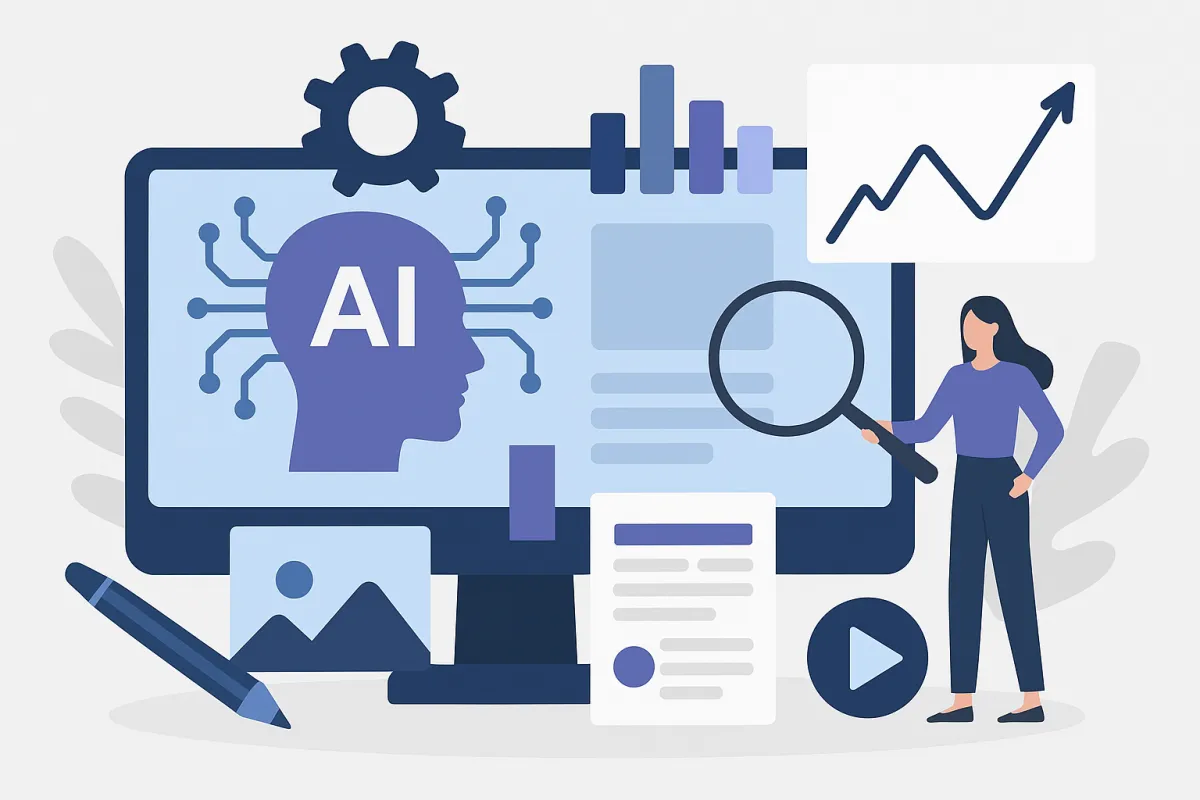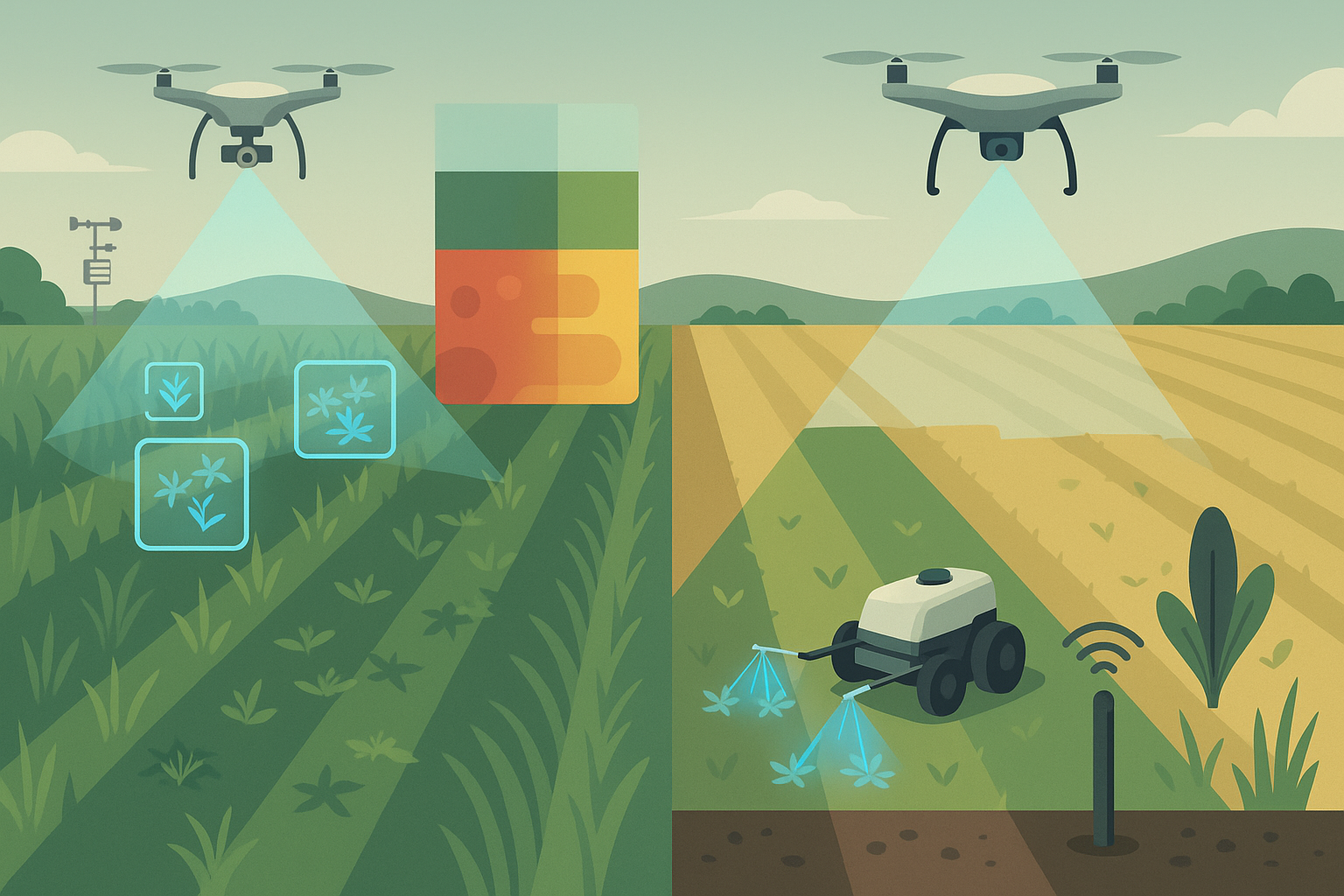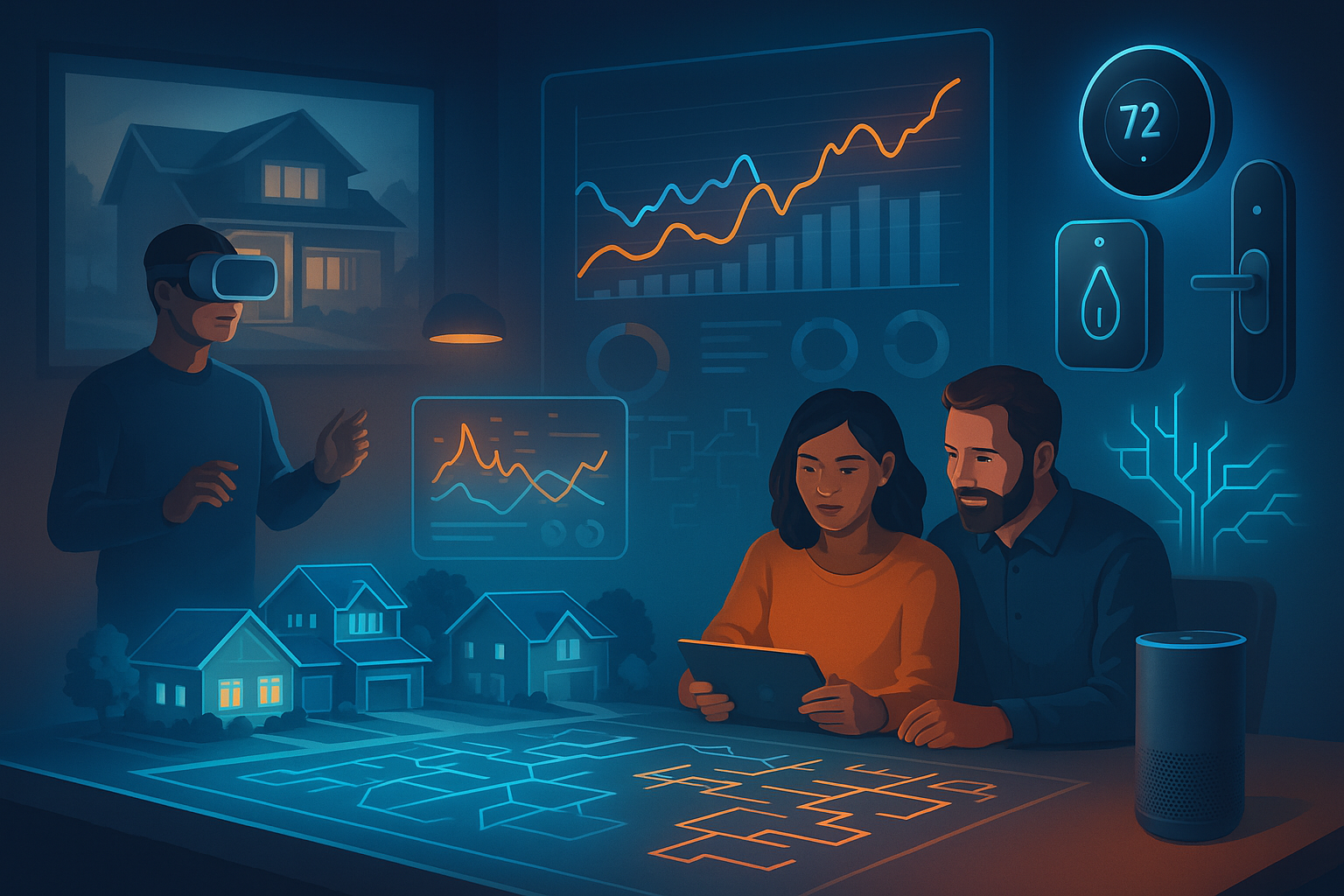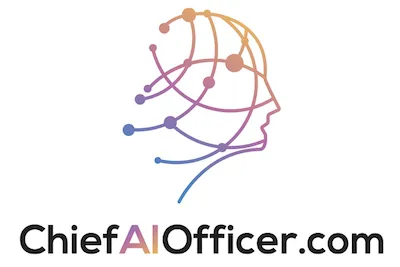How P&G's AI-Powered Ad Testing Cut Optimization Time from Weeks to Days and Reduced Costs by 90%
Procter & Gamble accelerated ad optimization cycles from multiple weeks to just days and delivered a 90 percent cost reduction by harnessing generative AI creative, real-time multivariate testing, predictive analytics, and automated media buying. In this case study, we explore:
- What challenges P&G confronted with traditional ad testing methods
- How AI technologies streamline creative ideation, campaign experimentation, and budget allocation
- The measurable impact on time-to-market, ad spend efficiency, and brand engagement
- The proprietary tools and machine-learning architectures powering P&G AI Studio
- A step-by-step blueprint for other organizations to adopt AI-driven ad testing
- P&G’s forward-looking AI roadmap and emerging applications
- The key performance metrics that validate AI’s ROI in advertising
How P&G's AI-Powered Ad Testing Cut Optimization Time from Weeks to Days and Reduced Costs 90%
P&G’s AI-powered ad testing reduced optimization time from weeks to days and cut costs by 90%. This was achieved through generative AI, real-time multivariate testing, predictive analytics, and automated media buying.
This article provides a detailed overview of P&G’s AI-driven ad testing, which is the primary focus of the user’s query.
What Challenges Did P&G Face with Traditional Ad Testing Methods?

Traditional ad testing at P&G relied on time-intensive focus groups, manual creative iterations, and siloed media negotiations, resulting in slow campaign rollouts and inflated costs. These factors began to undermine agility in a market demanding faster, more personalized advertising.
Why Were Conventional Ad Testing Cycles Slow and Costly?
Conventional ad testing depended on in-person focus groups and A/B surveys that introduced weeks of delay before performance insights. Manual data collection and analysis created bottlenecks that:
- Extended feedback loops by 2–4 weeks
- Required large respondent panels and third-party vendors
- Drove up research budgets by over 50 percent
Each delay postponed optimizations and wasted ad spend, leaving P&G struggling to respond to real-time market shifts. These constraints prepared the ground for a radical AI overhaul.
How Did Manual Processes Limit Marketing Optimization at P&G?
Manual creative reviews and spreadsheet-driven budget modelling demanded specialized teams for data wrangling rather than strategic campaign improvements. Poor scalability of manual processes meant:
- Creative teams juggled dozens of versions, limiting iteration speed
- Media buyers negotiated static buckets instead of dynamic bids
- Analysts spent 70 percent of their time cleaning data
These inefficiencies eroded potential gains in targeting precision and brand communication, prompting P&G to invest in AI-powered ad testing. This strategic decision allowed the company to refine their advertising strategies and enhance engagement with their audience. By leveraging data analytics and machine learning algorithms, P&G was able to rapidly assess the effectiveness of different ad campaigns and tailor their messaging accordingly. The implementation of aipowered ad testing at P&G not only improved campaign outcomes but also enabled more efficient allocation of marketing resources.
How Does P&G Use AI to Accelerate Ad Testing and Optimization?

P&G uses a layered AI architecture—combining generative models for creative ideation, predictive analytics for multivariate testing, and programmatic media buying—to compress cycles and reduce costs.
What Role Does Generative AI Play in Creating Advertising Ideas?
Generative AI models at P&G automatically generate headlines, visuals, and copy variations by learning from past high-performing campaigns. This approach:
- Produces hundreds of creative concepts in minutes
- Aligns tone and visuals to brand guidelines through fine-tuning
- Enables rapid prototyping and A/B testing at scale
Automated ideation frees creative teams to focus on refining high-impact concepts, accelerating the launch of optimized ads.
Generative AI in Advertising
Generative AI is transforming advertising by enabling personalization, reducing costs, and streamlining ad creation. It allows for the creation of highly customized content tailored to specific audiences, leading to more dynamic campaigns.
How Does AI Enable Real-Time Multivariate Testing and Predictive Analytics?
AI-driven testing platforms deploy multiple ad variants simultaneously and use live performance data to predict winner combinations. Key mechanisms include:
- Bayesian algorithms that update performance priors as clicks and conversions accrue
- Predictive models that forecast engagement uplift for each variant
- Dynamic allocation of impressions to top-performing creatives
This real-time experimentation compresses weeks of sequential tests into hours of continuous optimization.
How Does Automated Media Buying Improve Campaign Efficiency?
Programmatic bidding engines integrated with P&G AI Studio apply predictive signals to real-time bidding (RTB). By evaluating audience segments, bid landscapes, and historical conversion rates, the system:
- Adjusts bids instantaneously based on predicted ROI
- Optimizes budget pacing across channels and time zones
- Reduces wasted impressions by up to 40 percent
Automated media buying ensures that ad spend flows to the highest-yield placements without manual intervention, driving consistent ROI improvements.
What Are the Quantifiable Benefits of P&G’s AI-Powered Ad Testing?
P&G’s in-house AI solutions drove dramatic improvements across time, cost, and campaign performance metrics, creating a virtuous cycle of reinvestment and growth. These advancements not only optimized marketing outcomes but also allowed P&G to allocate resources more effectively towards innovative projects. Similarly, initiatives like Schneider Electric AI energy savings illustrate how leveraging AI can lead to significant efficiencies in energy consumption, further enhancing overall operational effectiveness. As a result, this continuous integration of technology fosters an environment ripe for sustained success and competitive advantage. This success not only enhanced P&G’s competitive edge but also positioned the company to leverage southeast asia’s ai adoption trends, tapping into burgeoning markets. By aligning their strategies with local advancements in technology, they have been able to tailor their offerings more effectively. This adaptability has strengthened customer engagement and sustained momentum for future initiatives. This transformative approach has enabled P&G to allocate resources more effectively, enhancing overall productivity. By integrating salesforce ai workload automation into their processes, the company has further streamlined operations, allowing teams to focus on strategic initiatives rather than repetitive tasks. As a result, P&G is not only maximizing returns on their investments but also setting new industry standards for performance and innovation.
P&G: Use Of AI For Ad Development, Targeting Provides 'Fuel' For Reinvestment – CFO
P&G’s use of AI in advertising is yielding considerable savings that are invested in reaching underserved consumers. The company is effectively employing generative AI to develop and test-market campaigns and reach targeted consumers.
How Did AI Reduce Optimization Time from Weeks to Days?
AI algorithms ingest campaign data, generate new creative, and retest variants within hours. As a result:
- Full creative cycle time fell from an average of 21 days to 3 days
- Continuous learning loops deliver next-generation optimizations daily
- Agile, sprint-based workflows replaced linear testing roadmaps
These compressed cycles enabled P&G to respond swiftly to market trends and seasonal demand shifts.
How Was Advertising Cost Reduced by 90% Using AI?
Cost efficiencies arose from three integrated sources:
| Cost Driver | AI-Enabled Efficiency | Impact |
|---|---|---|
| Creative Production | Automated concept generation | 60 percent reduction in agency fees |
| Media Buying | Real-time predictive bid adjustments | 40 percent reduction in wasted spend |
| Data Analysis & Reporting | Self-service dashboards and alerts | 80 percent less manual labor |
The compound effect of these efficiencies yielded a 90 percent decrease in overall campaign expenditure.
Cost-Effectiveness of AI Tools in Advertising
AI tools offer a cost-effective solution by optimizing advertising efforts and maximizing ROI. AI can reduce advertising costs through improved targeting, automation of repetitive tasks, optimized ad spend, and enhanced content creation.
What Improvements in Ad Effectiveness and Brand Communication Were Achieved?
Enhanced targeting and personalization led to higher engagement and brand lift:
- Click-through rates improved by 35 percent through dynamic creative optimization
- Brand recall increased by 25 percent in AI-tested versus control groups
- Customer sentiment scores rose thanks to more relevant ad messaging
These gains reinforced P&G’s leadership in consumer insights and brand storytelling.
Which AI Technologies and Proprietary Tools Power P&G’s Ad Testing Success?
P&G’s AI ecosystem integrates custom platforms with cutting-edge machine-learning models to orchestrate each phase of ad testing.
What Is the P&G AI Studio and How Does It Work?
P&G AI Studio is a centralized interface that unifies creative generation, performance forecasting, and media execution. It functions by:
- Ingesting historical campaign data and brand assets
- Training generative and predictive models on P&G’s proprietary datasets
- Providing a dashboard for one-click deployment of experiments
This platform anchors P&G’s AI-driven workflow and ensures consistent governance and brand compliance.
How Do Machine Learning and Neural Networks Support Optimization?
Under the hood, the following algorithms drive results:
| AI Component | Model Type | Role in Optimization |
|---|---|---|
| Generative Creative Module | Transformer-based LLM | Auto-creates copy and imagery |
| Predictive Analytics Engine | Random forest & XGBoost | Forecasts variant performance |
| Real-Time Experimentation | Bayesian bandit models | Allocates traffic to high-ROI variants |
| Media Buying Orchestrator | Reinforcement learning | Optimizes bids and budget pacing |
By leveraging neural networks for pattern recognition and advanced decision-making models for resource allocation, P&G captures complex interactions that manual methods miss.
How Is AI Integrated into P&G’s Marketing Technology Stack?
AI Studio connects via APIs to:
- Customer data platforms (CDPs) for enriched audience profiling
- Demand-side platforms (DSPs) for programmatic bidding
- Business intelligence tools for automated reporting
This modular integration ensures seamless data flow, rapid iteration, and robust compliance monitoring.
How Can Other Businesses Implement AI-Powered Ad Testing Like P&G?
Organizations seeking similar gains can follow a phased approach that mirrors P&G’s transformation.
What Are the Key Steps to Prepare for AI-Driven Ad Testing?
- Establish a unified data warehouse containing historical ad metrics and customer insights.
- Audit creative assets and encode brand guidelines for AI fine-tuning.
- Assemble an interdisciplinary team of marketers, data scientists, and engineers.
Laying this foundation ensures that AI models train on high-quality data and align with strategic objectives, setting the stage for scaled experimentation.
Which AI Tools and Platforms Support Efficient Ad Optimization?
Leading solutions include:
- Generative creative platforms (e.g., Lumen5, Copy.ai) for initial concept generation
- Experimentation suites (e.g., Optimizely, Google Ads Experiments) with predictive layers
- Programmatic media buyers (e.g., The Trade Desk, MediaMath) with AI-driven bidding
Selecting interoperable tools accelerates deployment and reduces integration friction.
How Can Companies Overcome Common Challenges in AI Adoption?
Companies often face siloed data, skill gaps, and change-management hurdles. Address these by:
- Implementing cross-functional training programs
- Phasing pilot projects to demonstrate value quickly
- Establishing clear governance to balance automation with brand safety
Proactive stakeholder alignment and incremental rollouts build trust and deliver early wins.
What Is the Future Outlook for AI in Advertising According to P&G’s Strategy?
P&G anticipates that generative AI and advanced analytics will continue to redefine marketing precision and creative innovation.
How Will AI Continue to Transform Marketing Optimization?
Emerging trends include:
- Fully autonomous campaign orchestration with minimal human oversight
- Hyper-personalized creative tailored to individual behavioral signals
- Cross-channel attribution models powered by deep-learning networks
These developments promise ever-faster cycles and deeper consumer connections.
What New AI Applications Is P&G Exploring for Advertising?
P&G is piloting:
- Voice-activated dynamic ads that adapt messaging in real time
- Augmented reality experiences generated on-the-fly by AI
- Emotion-detection models to refine creative framing
Such innovations aim to elevate engagement and strengthen brand affinity.
How Does AI Impact Long-Term ROI and Brand Growth?
By accelerating learning loops and optimizing spend allocation, AI supports:
- Sustainable reductions in customer acquisition costs
- Consistent improvements in lifetime value through personalized journeys
- Strategic reinvestment of savings into new product innovation
This virtuous cycle cements AI’s role as a growth engine and brand amplifier.
What Are the Key Metrics to Measure the ROI of AI-Powered Ad Testing?
Tracking the right performance indicators validates AI’s impact and guides continual refinement.
Which KPIs Demonstrate AI’s Impact on Advertising Efficiency?
- Time to Optimization: Reduction in days required to identify winning variants
- Cost per Conversion: Changes in acquisition costs following AI rollout
- Incremental Lift: Performance improvement compared to control groups
Monitoring these KPIs ensures that efficiency gains translate directly into business outcomes.
How Does P&G Track and Analyze AI-Driven Campaign Success?
P&G employs a unified analytics dashboard that consolidates:
- Real-time test results and predictive forecasts
- Media spend breakdowns by channel and audience segment
- Brand lift and sentiment analysis from consumer surveys
This integrated view empowers teams to iterate quickly and invest in top-performing strategies.
What Tools Support Continuous Monitoring of AI Advertising Performance?
Recommended platforms include:
| Platform | Core Function | Advantage |
|---|---|---|
| Google Analytics 4 | Cross-channel attribution | Unified reporting, predictive metrics |
| Adobe Experience Cloud | AI-driven insights | Automated anomaly detection |
| Tableau / Power BI | Custom dashboards | Flexible visualizations and alerts |
These solutions maintain transparency into AI experiments, enabling ongoing optimization and aligning campaigns with strategic goals.
Procter & Gamble’s AI-powered ad testing demonstrates that modern marketing efficiency stems from integrating generative creativity, predictive analytics, and programmatic automation. Organizations that invest in data unification, model governance, and cross-functional collaboration can achieve week-to-day optimization timelines, slashed ad spend, and elevated brand impact. By following P&G’s blueprint—grounded in robust AI Studio platforms and machine-learning methodologies—businesses can embark on their own path to transformative advertising efficiency and sustained growth. Furthermore, harnessing advanced technologies enables brands to craft personalized consumer experiences that resonate on a deeper level. As seen with Kraft Heinz AI product development, leveraging AI in product innovation not only accelerates time-to-market but also enhances the alignment between products and consumer preferences. This strategic focus on technology-driven solutions paves the way for sustained market relevance and competitive advantage.
Research Support
How generative AI advertising can help brands engage customers
Generative AI can produce a wide range of content, including text, images, and videos, that is highly customized and creative. This ability allows for the generation of unique and engaging ads tailored to specific audiences.




